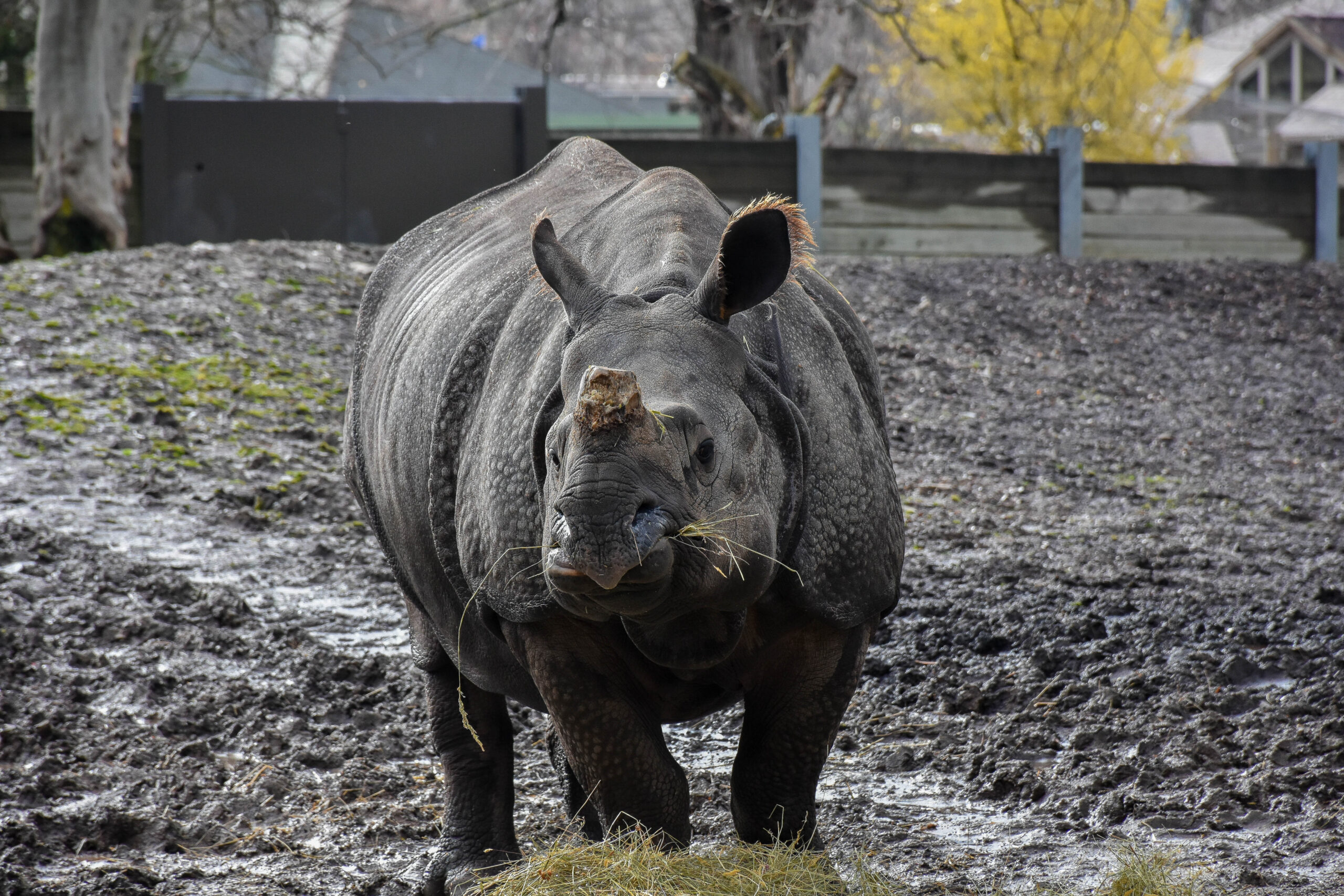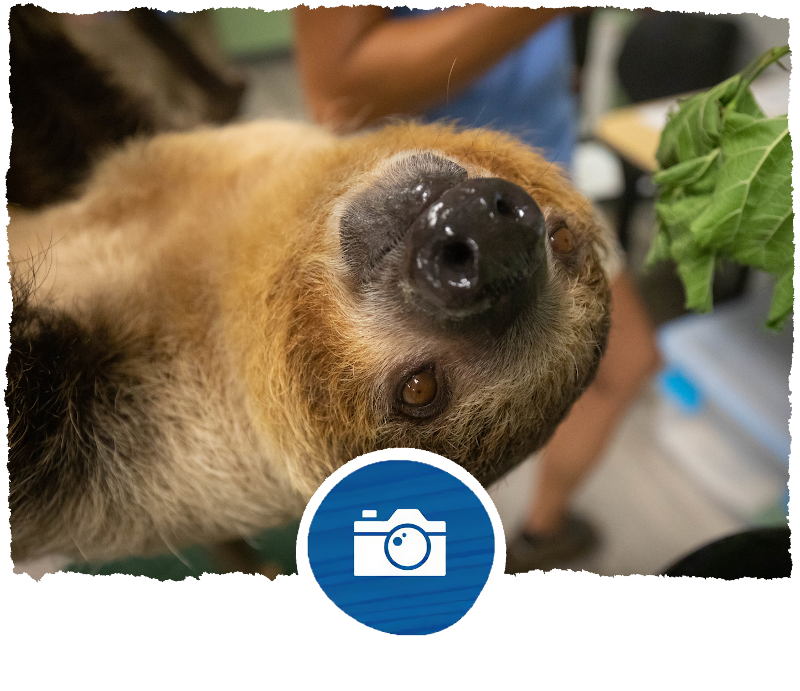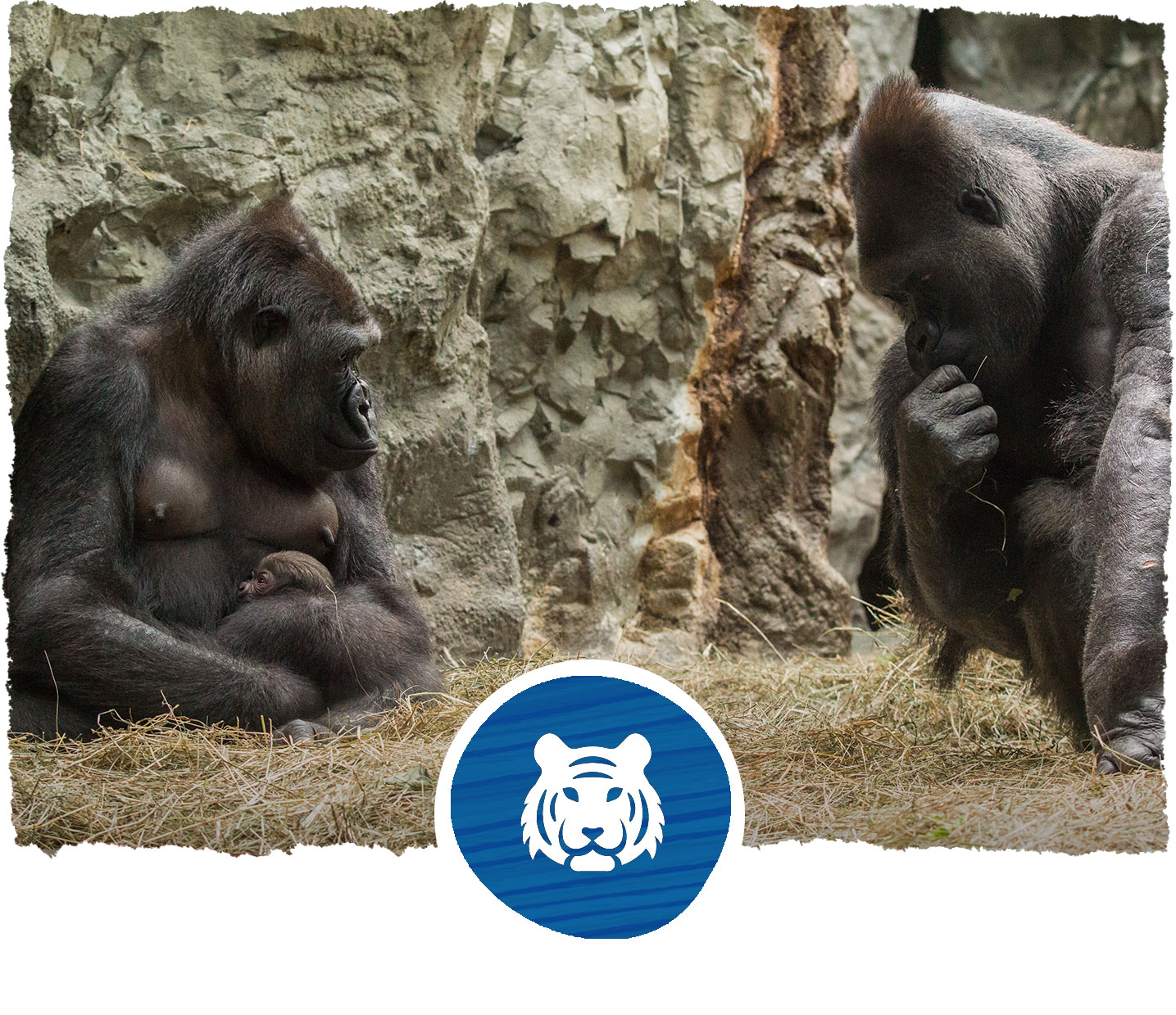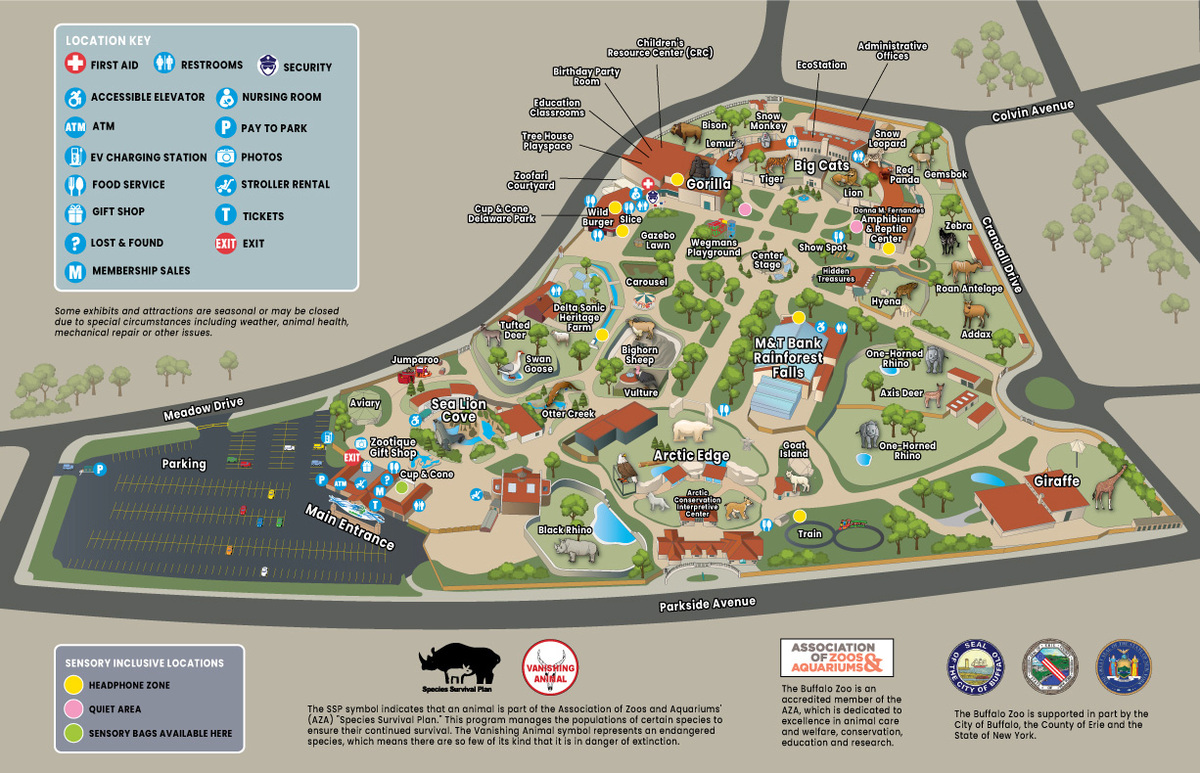Buffalo Zoo Helping Protect a Species from Poachers
By Kelly Ann Brown
The Buffalo Zoo often works with state and federal agencies on various projects, but this past winter we were presented with a unique opportunity.
If you’ve been to the Zoo over the past few years, you may have had a chance to admire the impressively large horn on our Indian rhinoceros, Tashi. We believed her horn was among – if not the – largest horn on a rhino of her species in North America.
Although they are composed mainly of keratin – the same common material that makes up hair, nails, feathers, wool, and hooves – rhino horns are valued in some parts of the world as symbols of wealth or for use in traditional medicine, even though the horns have been shown to have no medicinal value. This demand for rhino horn leads to the poaching of these endangered animals and the illegal trade in their horns.
In the wild, as well as in human care, rhinos will often rub their horns on trees, rocks, or other objects. If you look closely at a rhino’s horn you will often see the fraying or chipping that are signs of this kind of rubbing. In Tashi’s case, there was wear along the front central section of her horn. Our animal keepers and veterinary staff closely monitored the progression of this wear on Tashi’s horn over the course of several years.
This past winter, due to increasing signs of wear on Tashi’s horn, the decision was made to trim off about 13 inches of her horn to avoid the risk of her rubbing too vigorously and breaking it on her own. Keep in mind that a break in a rhino horn would be similar to a human breaking a long fingernail – possibly unpleasant, but generally not harmful. Similarly, as rhino horns are made entirely of the same keratin material as fingernails, a rhino horn trim is akin to a human clipping their nails… only on a much, much larger scale!



Once this section of Tashi’s horn was removed, we reached out to United States Fish and Wildlife Service (FWS) Wildlife Inspector Canine Handler Amanda Dickson. FWS has a number of wildlife detector dogs, including Amanda’s dog Lancer, that are trained on five key scents – sea turtle shell, elephant ivory, rhino horn, python skin, and seahorses. These dogs aid their human Inspector partners in detecting animal products (and sometimes live animals) that people attempt to illegally import into the United States.
Amanda agreed that Tashi’s horn would be of great value in training current and future FWS dogs to better detect attempts at illegal importation or trade of rhino horn in the United States. Arrangements were made, and the horn was securely transported to FWS!
The Buffalo Zoo shares the hope of agencies such as the U.S. Fish and Wildlife Service that interrupting the illegal trade in endangered animal products such as rhino horn and the prosecution of those participating in this trade will eventually lead to decreased poaching of these animals in the wild. We are thrilled that Inspector Dickson and her colleagues will put Tashi’s horn to good use in training their canine partners to help reduce the serious threat to wild rhinos.










